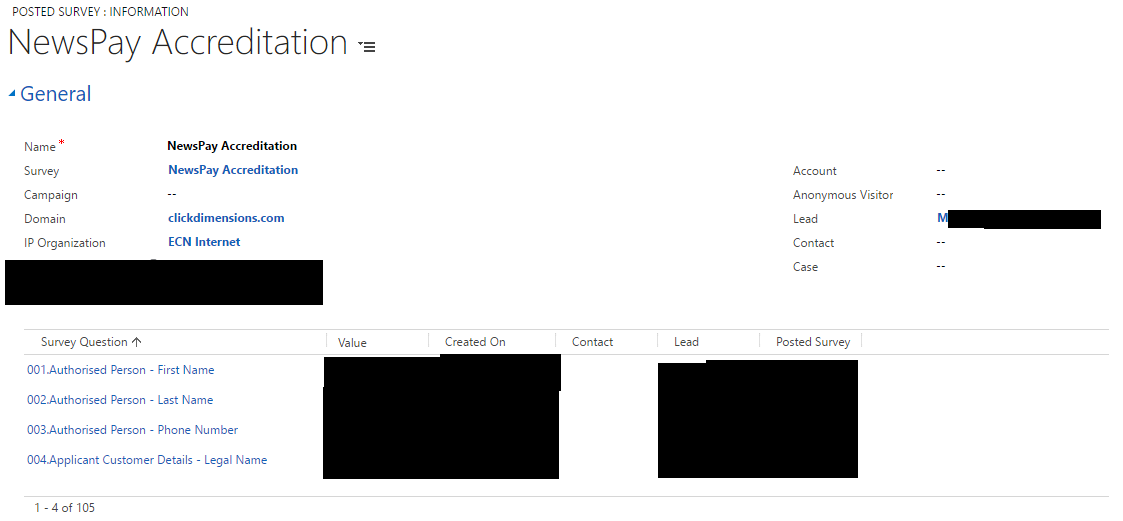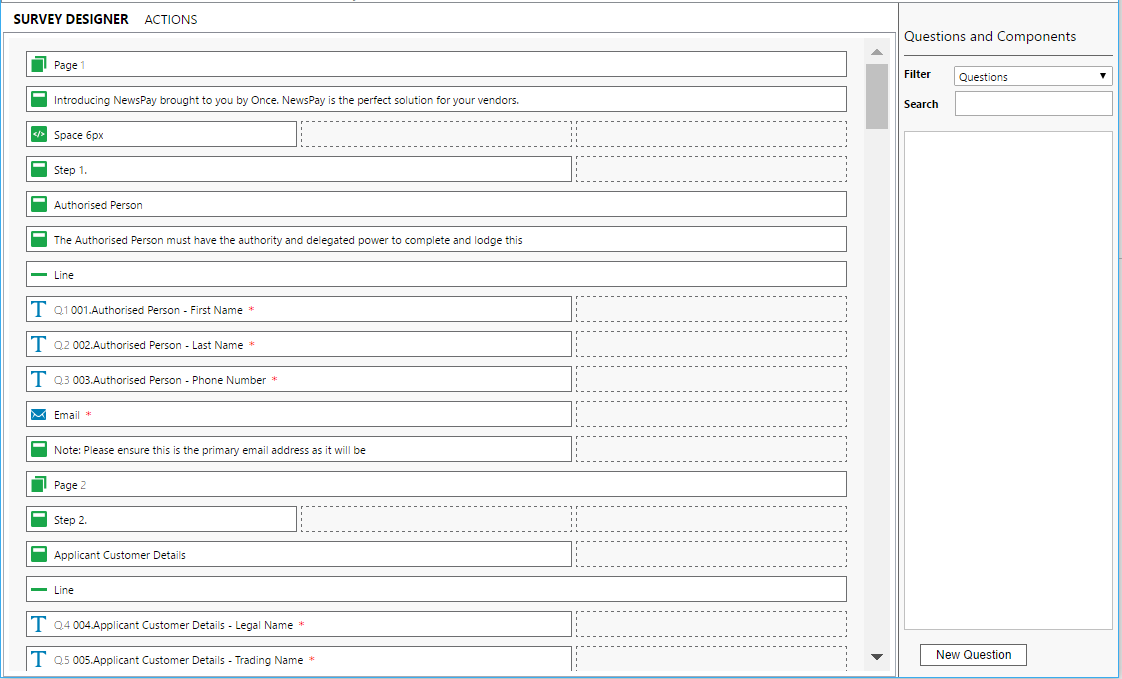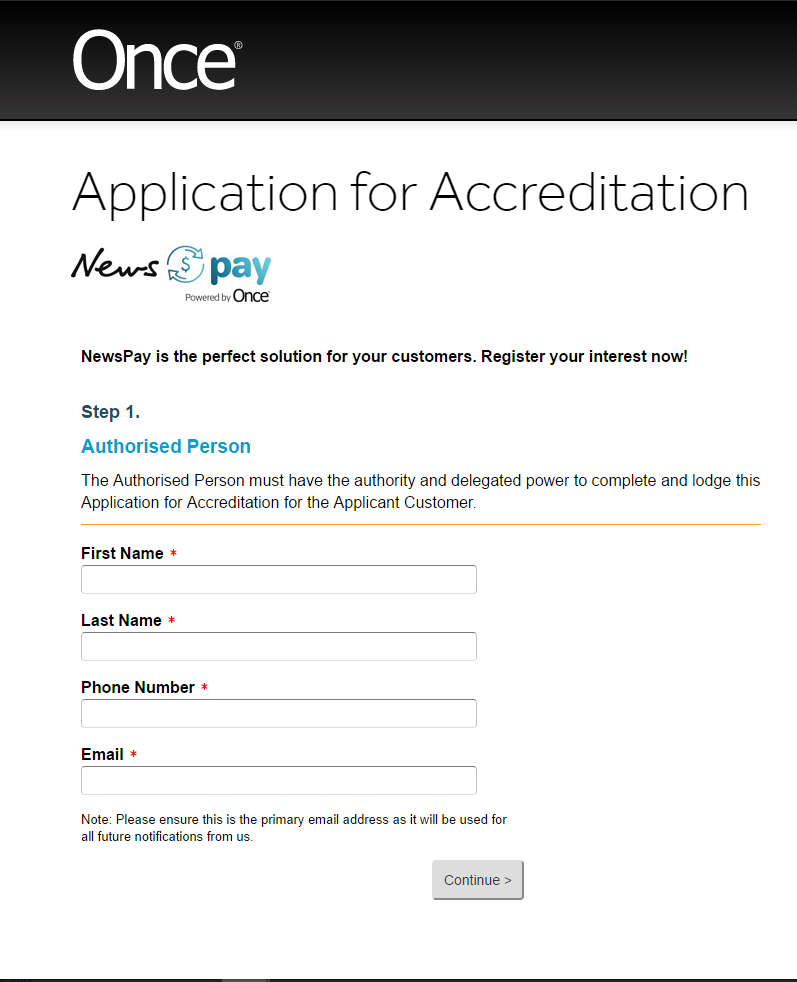Background
We had a scenario where the process of registering and setting up of new re-sellers of our company's product was going to be pushed to its limit. This process was as follows:
- A sales manager provides a PDF with about 100 questions on it to the new seller to fill out.
- The seller fills in as much information as possible and emails this back to the sales manager
- The sales manager then forwards this email to our internal accreditation and assessment team
- The assessment teams might have follow up questions, which they would triage via the sales manager back to the new seller.
- Data is re-keyed into CRM and other origination systems.
The above process has a few limitations.
- The PDF has a whole lot of questions which weren't applicable in all scenarios (there are different levels of resellers but they all fill in the same application form).
- There is a single key person dependency on the sales manager - if he goes on leave or is in a long meeting, no submissions can be made or passed onto the assessment teams.
- Application submissions were not centralized.
- The process is pretty manual and would not scale well if for example, you had to setup a chain of over 300 stores.
Within our CRM environment, we were already leveraging the lead entity for setting up new sellers. Given we had deployed ClickDimensions in our organization, I looked at what options or functionality we could leverage to improve this process. There were 2 options:
- Web Forms
- Surveys
I went with Surveys as they were better suited for this scenario because:
- I didn't want to create 100 custom fields on the lead entity - which would have been the case for web forms.
- Survey questions are re-usable on different surveys
- Survey questions can be dynamic in terms of flow/presentation (i.e We wont show all 100 questions -only those applicable based on the previous answers)
- Surveys are also responsive/mobile friendly and can be embedded/iframed into an existing web site
Solution
The high level overview of the solution/process was as follows
-
Create the survey questions. TIP:Always prefix the record name with the number the questions typically appear in order of. Really benefecial when you have lots of questions when it comes to views, document exports etc!
-
Create and configure your new survey in the survey designer. This is where you can add the survey questions, do some flow logic as well as add custom javascript, CSS styling and more! Read a more detailed blog on creating surveys here
- From the survey designer, you can either get the unique URL link or embedding code which you could use to integrate/replace an existing landing page e.g apply now page. An example below shows how the integration of the 'survey' into an existing website is pretty seamless.
4. You are basically done! Once a seller has successfully submitted their application, it lands up in CRM as a posted survey.

Notice how a lead has been automatically created for us? ClickDimensions does a search based on the email address to try and link it to an existing record inside CRM and if no match is found, a new lead is created.
The only 'issue' with posted surveys is that not all field values map onto the lead entity (except the email address) without some customization e.g. questions relating to address, contact numbers etc. This actually wasn't such a bad thing as we didn't want to create all those custom fields on the lead entity anyways. We mapped the key specific fields we wanted on the lead entity through a custom workflow. Perhaps though in a future update, there could be some configurable mapping functionality as a standard feature?
Once the lead is in CRM, the on-boarding process begins, with the various teams directing and moving the on-boarding process through its various stages.
Having the survey results related but isolated away from the core lead record has its benefits especially now with Word and Excel templates baked into CRM online. Generating reports, contracts etc is pretty straightforward from here.
We have now replaced the paper application form, have a centralized and secure location for all applications and removed the single person dependency. Awesome! Any questions or thoughts, let me know.


